The Journey
There are so many people motivated to make the world a healthier and more sustainable place; however, sustaining agriculture production can be an overwhelming endeavour.
As well, there are so many people and organisations out there who want to contribute towards making the world a better place but do not know where they can reliably invest in projects.
Importantly, having financial freedom allows creators to build more and better products to solve the thorniest societal problems across the globe.
Building a complete food system digital overview on top of the blockchain, in efforts to feed the entire planet a healthy and sustainable diet. Starting with soil, we look to advance human-centric solutions to combat soil degradation, improve and maintain soil quality, sequester carbon and encourage soil regeneration while reducing the negative impact of agricultural practices.
We smooth the way for DeFi Platforms to comply with traditional investment standards
1. Standardised financial institutions (SPVs) compliance for DeFi investors
- regulations that DeFi platforms must comply with to be onboarded by traditional banking, financial services and insurances (BFSIs) organizations.
- SPV can help to isolate the parent company from financial risk by separating the assets and liabilities of the SPV from those of the parent company.
- allow investors to buy securities that are backed by specific assets rather than the creditworthiness of the parent company.

We also make it easier for banks to comply with the desire of investors to see how their money is being spent and the impact it is having.
2. Transparent Net Zero provenance metrics for value chain investors
- proof-of-existence (POE)
- transparent practice
- data provenance
- proof-of-origin and geolocation
- freshness/time-to-market
- produce safety and integrity
- non-exploitation/sustainability credentials
- climate-aware services: compensation and neutralisation projects
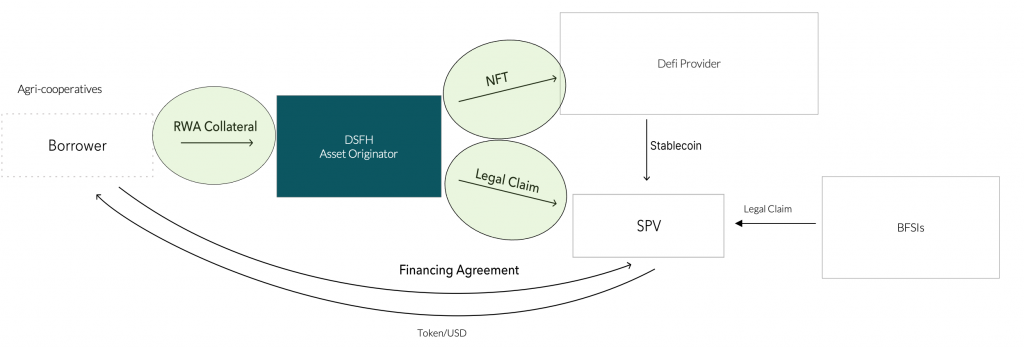
.
As well as open the door for input providers to comply with farmer’s needs for privacy when sharing their data and to compensate them for that data.
3. Optional: Net Zero provenance data for value chain service providers to build products

The Challenge Today
Have we ever had so many resources in pursuant to the goals to feed the entire world a healthy and sustainable diet?
In a post-Covid world, it is clear to feed a global population of nine billion people by 2030, the Agri-Food industry needs to reconsider many keys parts of the food system, but certainly, it still needs to be more resilient to changes.
Subsequently, sustainable mitigation action is necessary to bring measurable added value when tackling the challenges of our generation as stated by the UN Sustainable Development Goals for 2030. The metrics defining sustainability and how it is used in the parlance of agriculture have been broadly applied to the industry, but several scholars argue it originally meant farming that does not erode its own base of soil, water, farmers, or children willing to farm. Sustainable factors such as access to clean and uncontaminated water, improvements in nutritional outputs, biodiversity regeneration, pollination, pest control or nutrient recycling, and environmental and climate change affects every user.
Obtaining significant progress in terms of food production requires changing people´s hearts and minds. As it happens with any significant change, we need to understand the unique reality of each case and show our ability to help the users be successful, using technology effectively and intelligently. Only then, will organizations will be able to collaborate in a way that will deliver optimum output, viable economical models and open collaboration.
Soil
As a consequence, the Data-smart Farmhand platform will start with a minimal viable soil and first mile environmental data to digitally map soil information for producers, providers and consumers to align with existing agriculture cooperative governance in the European Union.

Soil impact factors affect every user, such as access to clean and uncontaminated water, improvements in nutritional outputs, biodiversity regeneration, pollination, pest control or nutrient recycling, and climate change. Worsening climate change is inflating soil erosion, intensive agriculture management is increasing the degradation of soil in our croplands, as well as the effects on water, wind, piping and tillage erosion. Consider that it can take the Earth up to one thousand years to generate one inch (2.54 cm) of quality topsoil, much more attention must be given to soil erosion prevention techniques and strategies.
Therefore, combating soil degradation, and improving and maintaining soil quality is significant for farmers to improve not only yields, but the nutritional value of those yields and their return on investment. This is important to sustainably feed all consumers.
Unfortunately, for maintaining environmental standards, findings suggest that comprehension of soil health is severely limited. Soil data needs to be more organized and readily accessible to maintain quality. And the industry needs to transform the business model to incentivize all stakeholders to engage further in a real-time data-sharing ecosystem.
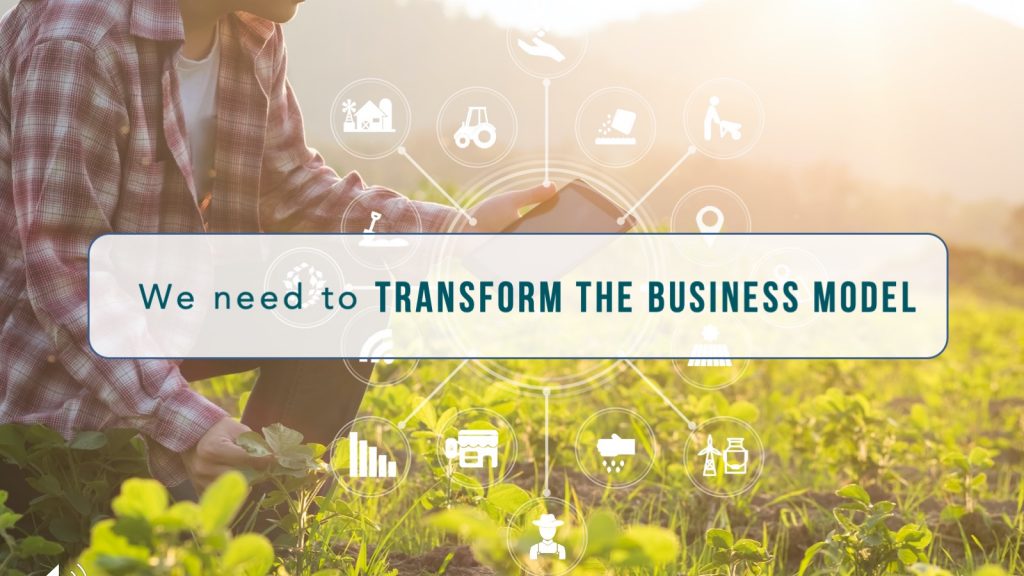
Inclusive Ecosystem Governance
We argue the greatest promise for integrating blockchain is in the opportunity to transform the broadly defined farm-to-mouth value chain with an inclusive ecosystem governance. This opportunity expands beyond typical supply chain traceability activities to include any direct or indirect stakeholder with relation to the way that food is grown, processed, shipped, handled, sold, researched and eaten.
Importantly, the blockchain mechanism effectively democratizes the ownership of an ecosystem, which further empowers transparent collaboration between stakeholders. In effect, integrating a blockchain mechanism shoulders the burden of trust, freeing stakeholders to confidently collaborate on solutions with one another.
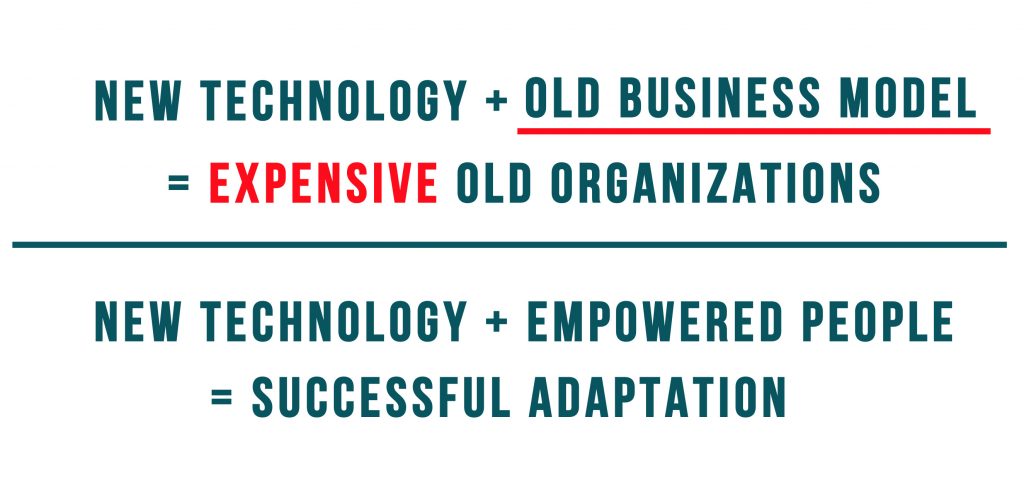
Saying that, in the current centralized business model, an organization dedicates an enormous amount of effort to broker ‘transactional trust’. Trust gained through people validating each partner’s deliverables being ‘pushed’ up the supply chain.
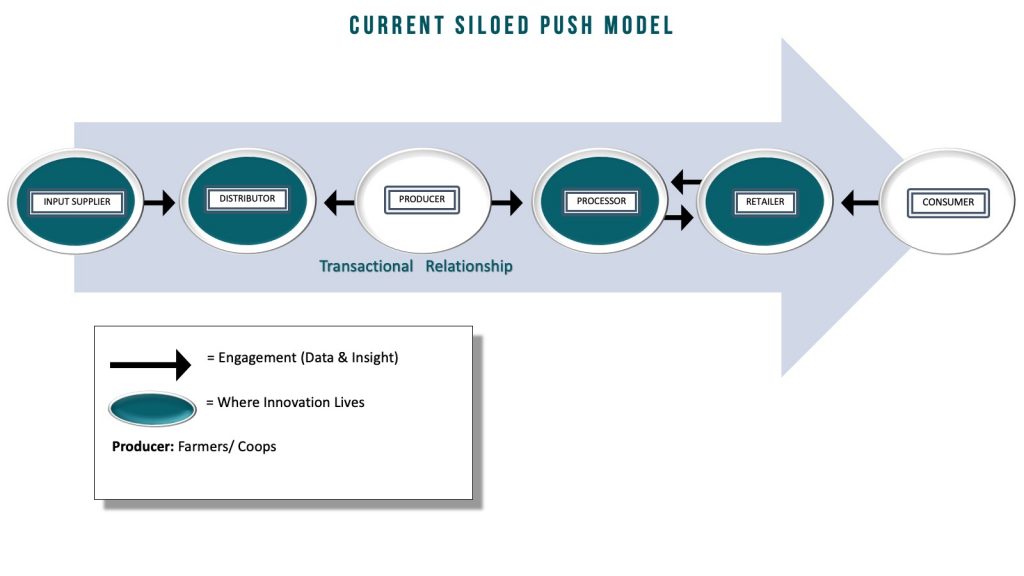
Across the food system journey, there is incredible potential and unlimited opportunities to empower producers, cooperatives and companies to transform the antiquated business model towards a dynamic and adaptive demand-pull model of the circular economy. And therefore, capitalizing on the various benefits of transparency and open information exchange. With Blockchain, ownership of the food system is democratized with a token to give all these stakeholders access to the platform and its technology, so they can create their own transactional relationship. The organization(s) that created the digital twin platform are incentivized less by a stakeholders’ profit margins in these transactional relationships, but more incentivized by creating velocity (usage of the token) across this platform.
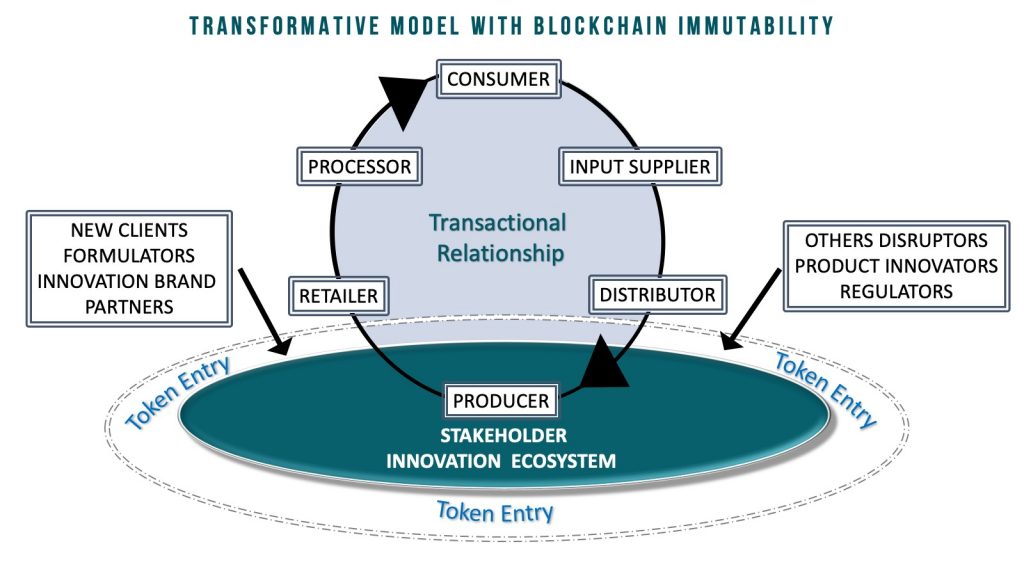
Smart Farming and Data Sovereignty – Who owns the data?
Data sovereignty is, or should be, integral to every aspect of decision making by government, business, civil society and individuals. Availability of verified, transparent, reliable, and accurate data can make or break a user’s capacity to make robust decisions that guarantee their quality of life and security.
Data sovereignty empowers all users through direct and indirect engagement with:
- DATA SERVICES – evidenced-based and fulfills a recognized need for access to global and regional data sets
- USER ENGAGEMENT – brings data users and data providers into a community conversation for peer-to-peer knowledge-sharing, data-sharing and feedback
- DATA POLICY – using and contributing to cooperative initiatives to harmonize data ontology, promote standards and the use of open data
- DATA LITERACY – improve the capacity of users to use data for decision making
We need to incentives all participants and compensating them for creating and sharing their data. The public blockchain mechanism can abstract away questions about trustworthiness in transactions, if applied correctly. Each participant will have their own unique cryptographic-encoded key (token) that guarantees access to incorruptible information and its history as it was originally recorded onto the blockchain ledger. This public token ownership is the mechanism which allows stakeholders to become ecosystem shareholders (ownership). This new model allows stakeholders to build a transparent governance for access and financial inclusion in the ecosystem by encouraging the value of sharing and working more closely together to create successful adoption.
the Data-smart Farmhand
The Data-smart Farmhand is based on the need for a systemwide database product and inclusive ecosystem overhaul transforming the food system business model. It is a virtual representation of verifiable, transparent and real-time data on a public blockchain framework. It harmonizes data ontology and sovereignty, and ecosystem interoperability, for all organizations to build improved food system resiliency, starting with soil.
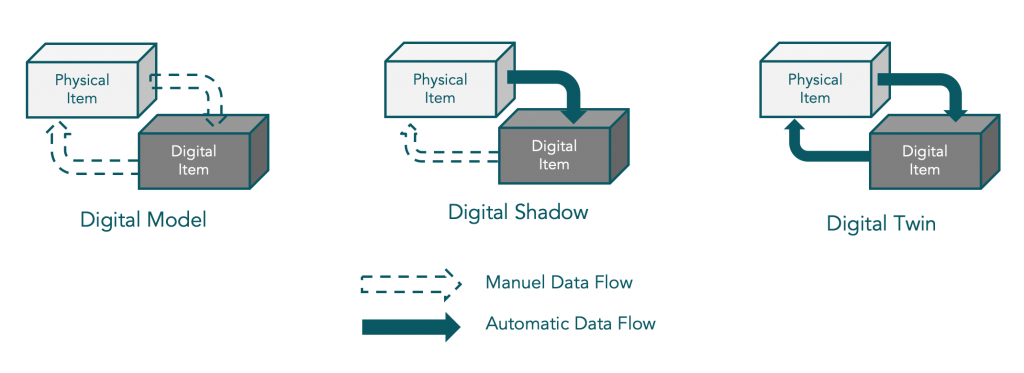
We would fetch and scrape specific data from public aggregators and captured it from stakeholder platforms using agnostic APIs. Adding the public blockchain offers all shareholders (token holders) access to our marketplace of technology and data sharing testbeds to solve their pain points of connectivity, digitalization and harmonization of data. In the future, data will automatedly be added through a system of connected IoT sensors, across our digital twin network.
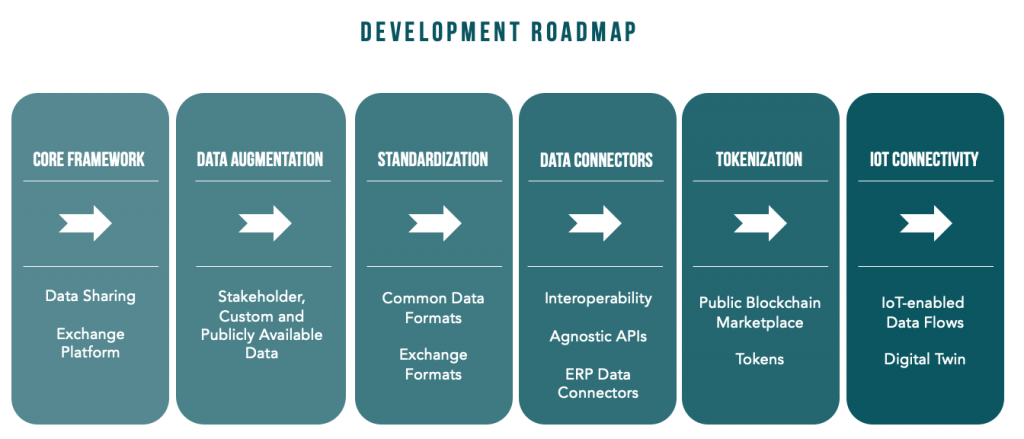
We use a hybrid blockchain solution with a mix of off-chain data and on-chain verification possibilities so that both privacy and authenticity concerns are addressed. Access to participate is incentivized by a public blockchain token. However, the underpinning of the data sharing platform is based on DLT for auditing and verification. This makes it possible to publish data in various formats and control access to this data, while guarantying immutability and security through cryptographic hashing, which offers a low entry barrier and adoption curve for users.
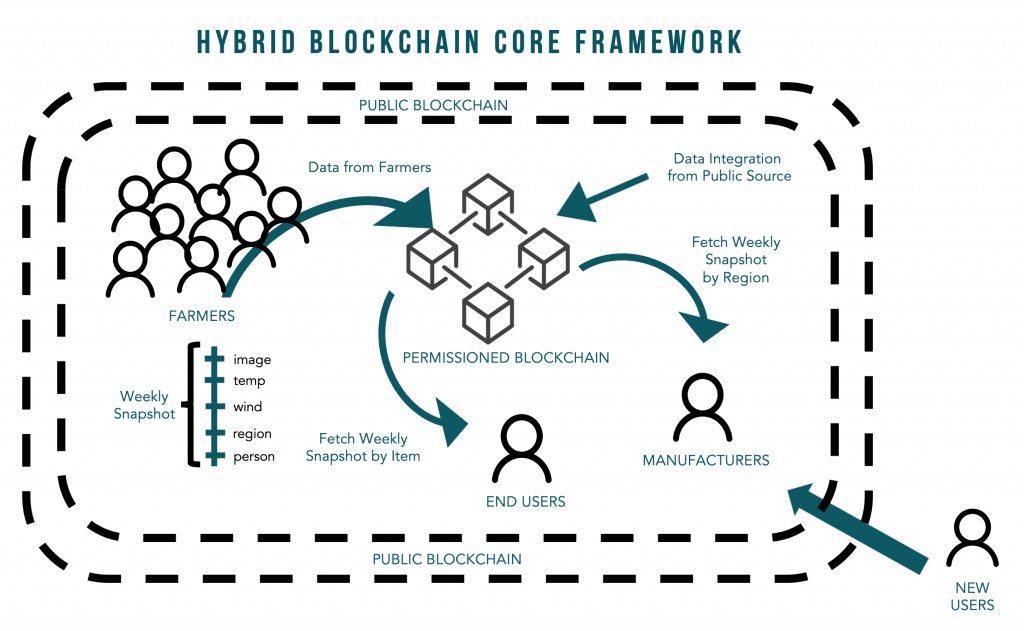
There are enormous needs for this new collaborative framework. Partners can capitalize from their own contributions, improve quality control and incentivize connectivity. Let’s spell that out, participants will earn value (MONEY) for sharing their data on the platform. Whereas any stakeholder stands to gain from transforming the system to be inclusive for everyone (further velocity), and all this can be done without losing competitive advantage or regulatory control. It is a standardized food system database of transparent and immutable information which can remedy doubts, misalignments or prove to be a deterrent for nefarious actions or miscalculations from even the most competent partners.
The Data-smart Farmhand would sit in between the consortium of organizations looking to build this digital overview, brokering trust and an inclusive governance. We use our hybrid blockchain model to incentivizing stakeholder engagement, while being the custodians of a platform that compliments all private-public partners in efforts to create more human-centric and bottom up solutions.
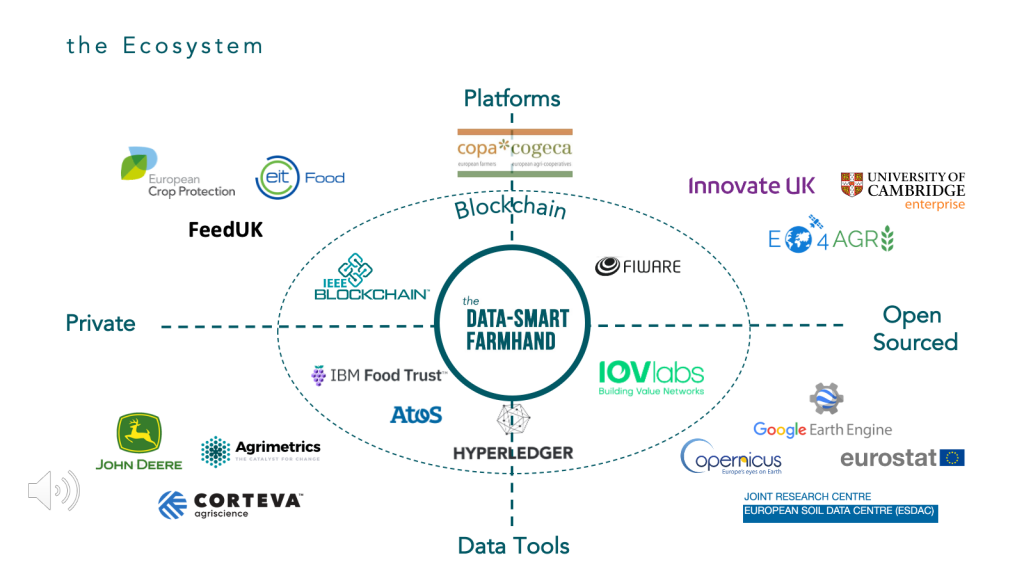
Further stakeholder engagement with the DSFH platform is necessary to create data conformity across the entire value chain and to satisfy the mountain of needs from different users, and build token velocity for store-of-value. Importantly, extensive industry participation is necessary in order to identify the best food system metrics, how to scale the ecosystem as a community, and gain acceptance of this sustainable business model.
Tokenization of Food System Ecosystem: Value In, Value Out
As a consequence, there are four ways a blockchain-based and tokenized digital twin can economically benefit farmers directly, and all stakeholders indirectly:
- Farmers would be compensated for their data (paid in tokens), which incentivizes them to use our partners services more often, and to input more quality data into the system. This will be true for any stakeholder that generates data using the DSFH platform token.
- Store-of-value of token – there is a finite number of tokens, so the model incentivizes token holders to promote the value of the ecosystem to others to generate velocity across the entire DSFH platform. More usage, means more demand for the tokens, which in turn means a higher value of the token in someone’s possession. Furthermore, being a shareholder should incentivize inputting quality data into the system. Better data inputs and more data inputs. Replacing Garbage In, Garbage Out, with Value in, Value out!
- The digital testbed usage will benefit any organization looking to build tools for improved soil practices and increased resiliency. To start, it will mostly help the farmers because technology providers will be more incentivized focus their research and efforts to producing better and more useful tools and less on organizing and verifiying the network data needed to build their tools.
- In the future, as we scale and connect the digital twin to a larger value chain ecosystem, this would mean more profits for farmers, because less (or zero) profit sharing with intermediaries. And more broadly, the entire ecosystem would be incentivized to achieve more nutritional, safe and affordable products for consumers, and with less compliance costs for the chain.
Our Marketspace Product: Digital Records of Physical Assets for Investment

To use the platform, customers are charged based on the amount of segmented or sorted data they want to use or with a subscription for an unlimited amount of data.
- Visualising the data on the UI is free; downloading data or downloading visualised data (maps, tables etc) has a cost
- Input suppliers would pay to have access to farmers and distributors data for best practices
- Retailers would pay to better understand the consumers purchasing habits
- certification fees
- other more complex pricing models (e.g., training and consultancy, workshop fees and sponsorships
- customer growth: government and other non-profit funding organizations, as well as other verticals that need Net Zero emission compliance
Product Features
-
Farmers and fieldworkers use our App to collect data and compile farm-habitat assessments of their physical assets.
-
Assessments are converted into traceable digital records by our platform and stored in a user’s native wallet
-
Our marketspace platform uses these digital records to engage providers for fundraising and accredited services
-
Members can access our platform to view data for how funds are being used to support endeavours
-
Members contribute and vote on community decisions to improve habitat assessment metrics/best practices
